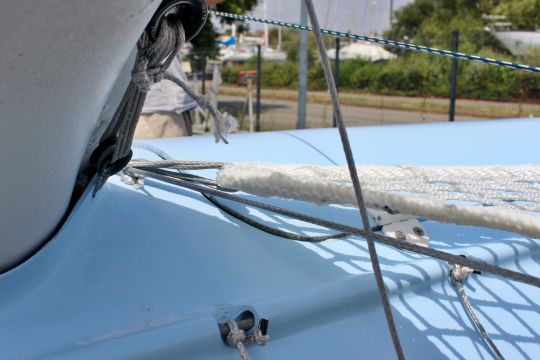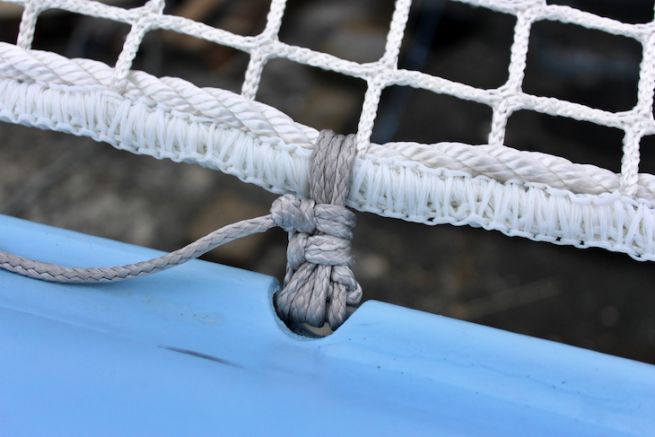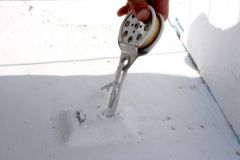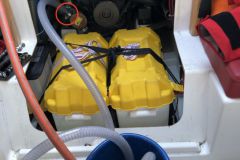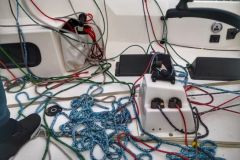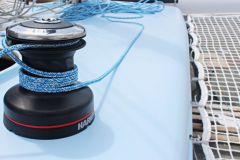A textile hanging system
Transfilage is a textile hanging system between two points that can withstand very high stresses. It is made with rope, the diameter and strength of which will be chosen according to the need for resistance of the transfilage. We recommend the use of Dyneema or Spectra for their resistance quality and low coefficient of friction, which ensures proper tensioning.
Calculate the resistance
To calculate the strength, it can be said that one transfilage turn corresponds to the strength of the string strand used. Thus, the more the number of revolutions is multiplied, the more the resistance load of the end is multiplied.
Example: If the resistance of the strand is 1 ton, a resistance of 3 tons will be obtained by performing 3 turns.
A transfilage ensures a light and resistant grip, provided it is well done. To do this, you have to respect a few rules.
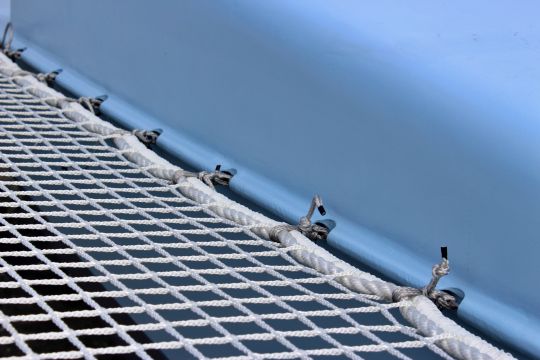
The method
1 - The attachment point
You can make either a splice or a knot (chair knot, dead tower two-half key). The splice being the most aesthetic and the most resistant even if in this context - the installation of a trampoline - it is not suitable.

2 - A minimum of 3 laps
The number of revolutions must be calculated according to the workload of the deck hardware part - in our case the trampoline - and the rope. It is necessary to count a minimum of three turns to make a correct transfilage. Too many turns reduce the resistance of the transfilage since the strands may overlap. The strands must be parallel.
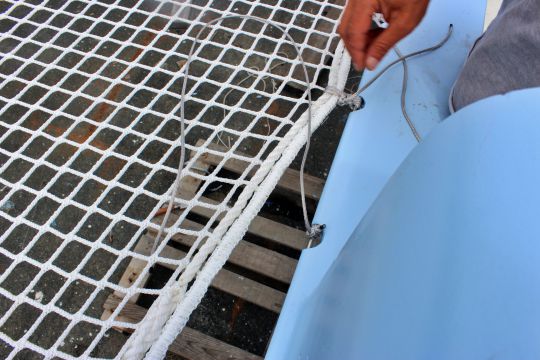
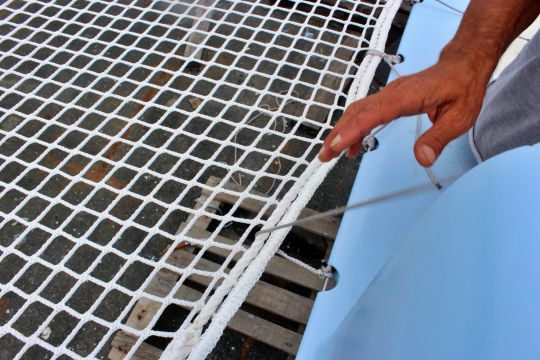
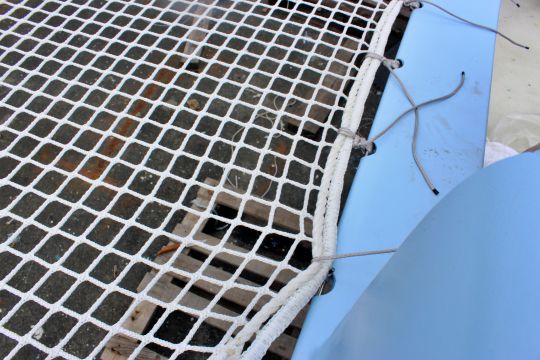
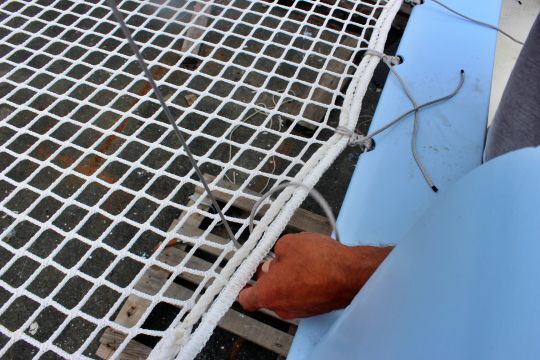
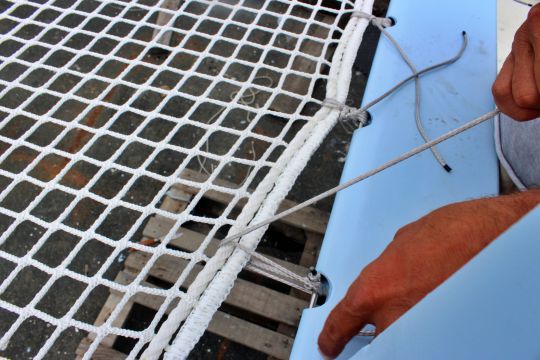
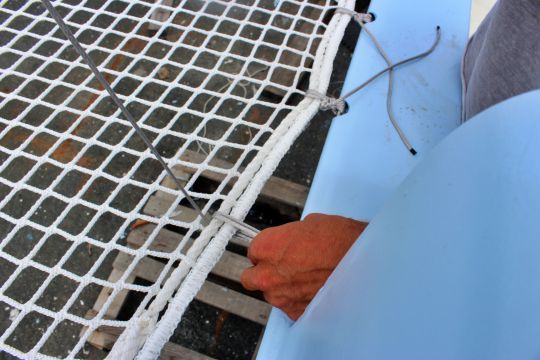
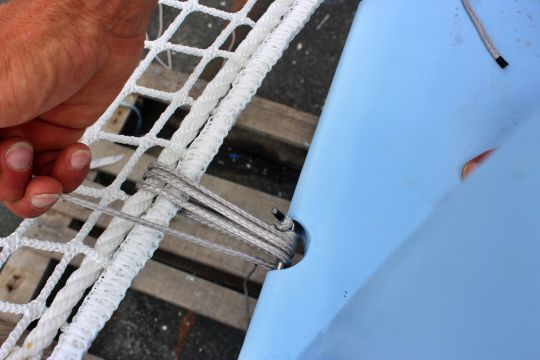
When performing the turns, the tensioning is also adjusted. If a very high voltage is required, a hoist or winch can be used.
3 - The finish
Once the desired tension has been obtained, a dead turn and a series of half keys are made. There are several types of finishing: circular or straight.
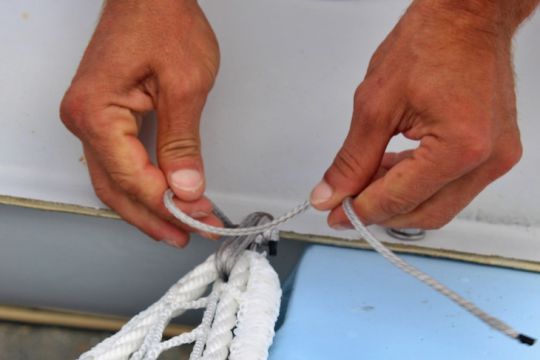

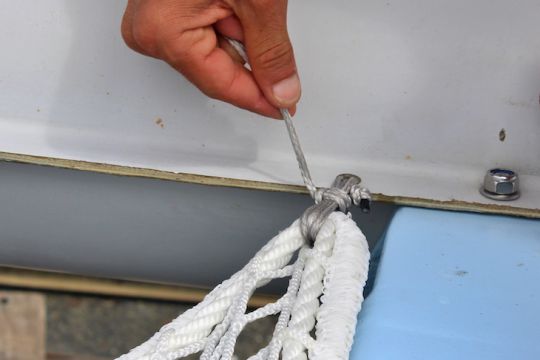
In the circular version, the knot is always made on the same side, while in the right version, it is alternated.
4 - The stop node
To finish a transfilage after the half keys, a stop knot must be made at the end of the end.
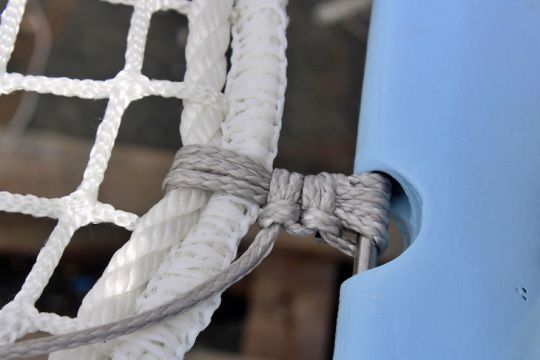
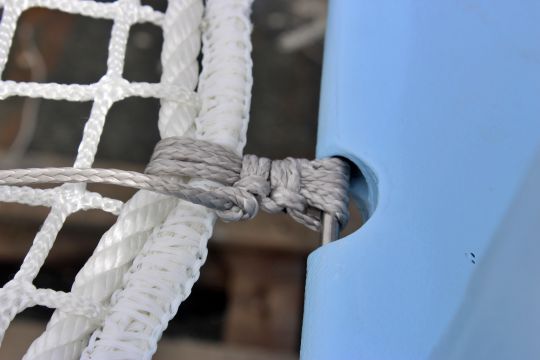
Another example of transfilage
